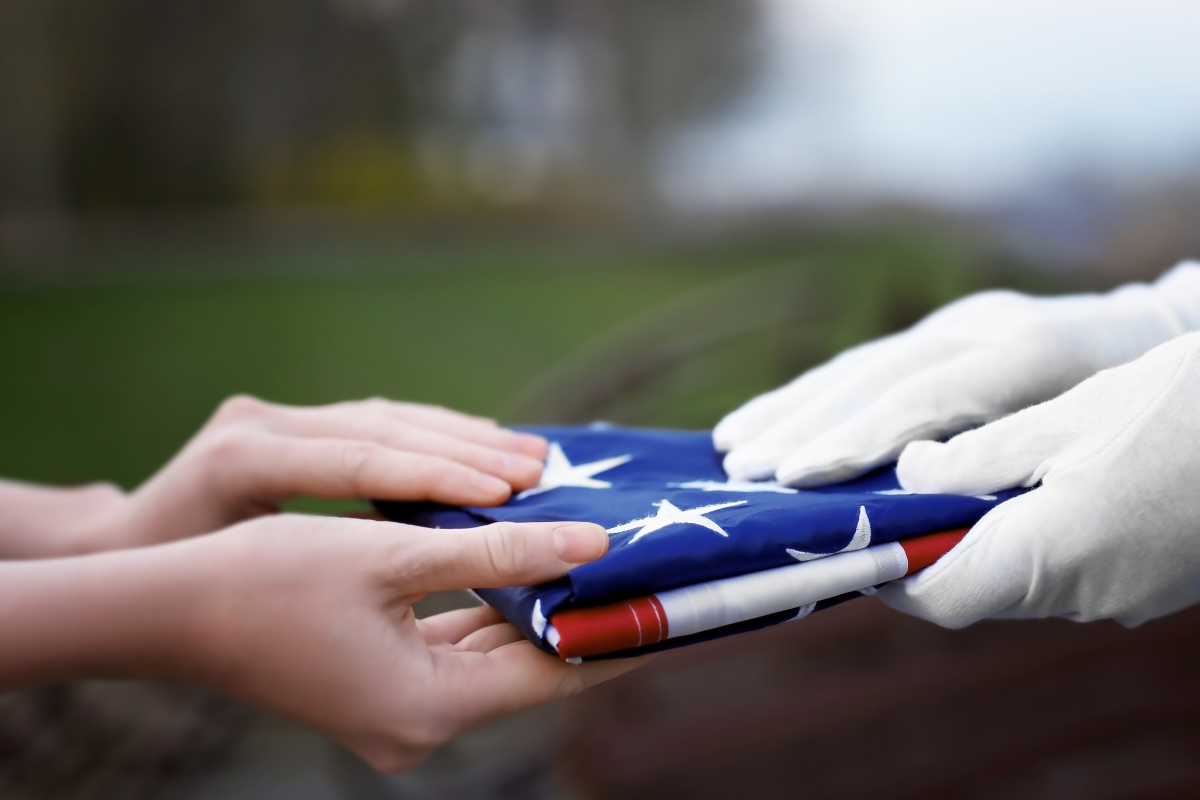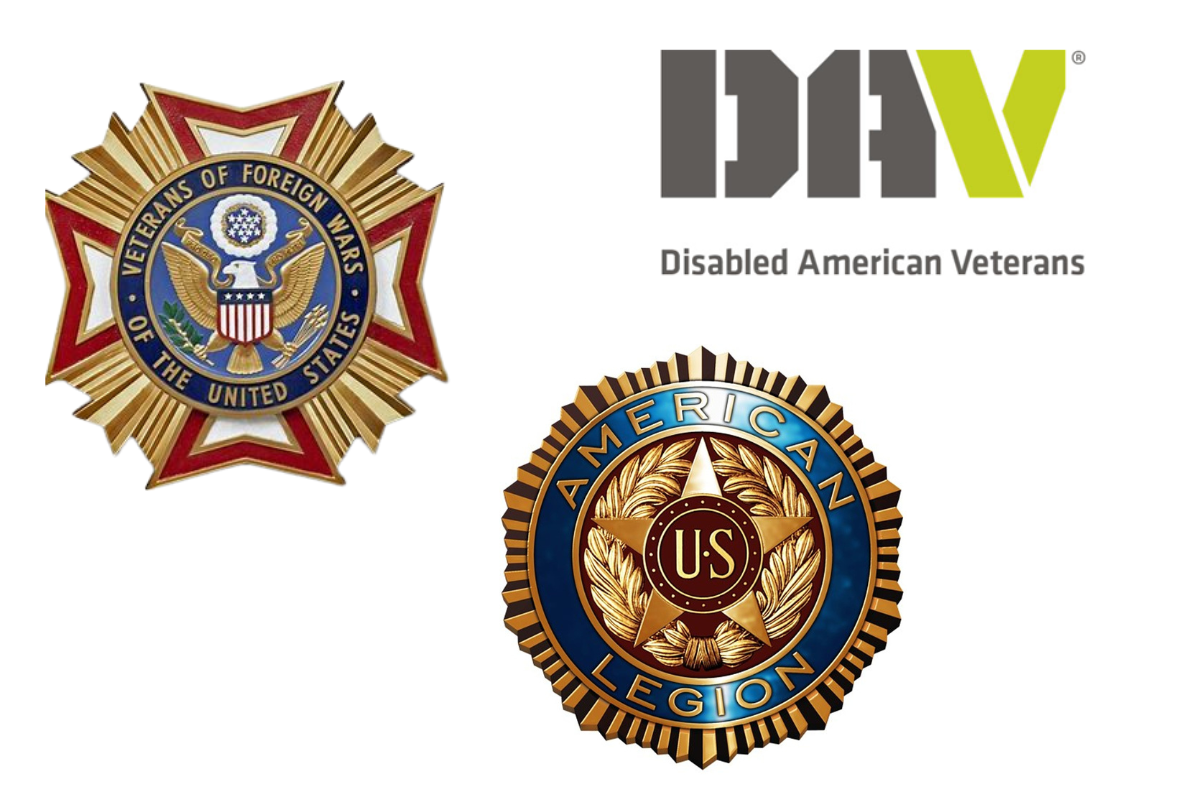Post Disclaimer: This blog reflects the author's personal experience with end-of-life matters and is provided in good faith for informational purposes only. While we aim to provide clear guidance on hard-to-find topics, this content is not legal advice and your use is at your own risk. Estate planning and end-of-life laws vary by location, so please consult your state's laws and seek guidance from a licensed attorney for your specific situation. We make no warranty about the accuracy or completeness of this information, which does not replace professional legal counsel. For more information, please see our full disclaimer.
This empathetic guide aims to support families navigating the complexities of Veterans Administration death benefits after losing a loved one.
Navigating the aftermath of losing a loved one is never easy. For families of veterans, understanding Veterans Administration (VA) death benefits is crucial but often overwhelming.
These benefits are essential in providing the support and resources needed during such a challenging time.
It's vital to be informed about what is available, from burial benefits to financial assistance for surviving spouses.
Knowing your entitlements not only eases the financial burden but also honors the service and sacrifice of your loved one.
By breaking down the complexities, families can ensure they receive the benefits rightfully due to them.

Navigating Veterans Administration Death Benefits
Understanding the complexities of Veterans Administration death benefits is crucial for those managing the affairs of a deceased veteran.
This support system is designed to ease financial and logistical burdens, offering various assistance to surviving family members.
We will focus on the primary types of benefits available and the criteria required to access them.
What are Veterans Administration Death Benefits?
The Veterans Administration death benefits encompass several types of support that aim to honor veterans' service and assist their families during challenging times.
These benefits primarily include:
- Burial Benefits: This financial assistance covers funeral and burial expenses. The VA burial allowance helps defray costs associated with a veteran's final resting place, whether in a national cemetery or another location. The benefits may include a plot allowance and transportation expenses. More details can be found in the VA burial benefits documentation.
- Surviving Spouse Financial Assistance: The VA offers ongoing financial support to surviving spouses of veterans. These benefits often come in the form of Dependency and Indemnity Compensation (DIC), a monthly payment for families whose veterans died from service-related conditions.
- Memorial Benefits: Beyond financial assistance, the VA provides headstones or markers and presidential memorial certificates to commemorate the veteran's service and ensure they are remembered with honor and dignity.
Eligibility Criteria
Eligibility for Veterans Administration death benefits is determined by specific criteria that must be met.
The significant factors include:
- Service Requirements: The deceased veteran must have been discharged under other-than-dishonorable conditions. This condition ensures that the benefits honor those who served honorably.
- Circumstances of Death: If a veteran's death is related to service-connected conditions, it expands eligibility for more comprehensive benefits, including VA burial allowances.
- Relationship to the Veteran: Proof of relationship to the veteran is required for surviving spouses and dependents. This step confirms entitlement to financial support.
Understanding these criteria and the types of assistance available is vital in ensuring that the family secures the support offered through this program.
Awareness and preparedness make this challenging transition more manageable, providing some relief during an emotionally stressful time.

Types of Benefits Available
Understanding the range of benefits provided by the Veterans Administration is vital for families handling the affairs of a deceased veteran.
These benefits are designed to offer financial relief and honor the veteran's service, giving survivors the support they need during a difficult time.
Burial Benefits
The Veterans Administration provides various burial benefits to help alleviate the financial burden of funeral and burial costs.
Eligible families can receive:
- Plot Allowances: Financial assistance towards the purchase of a burial plot. If the veteran is not buried in a national cemetery, the allowance can help cover the interment costs.
- Burial Allowances: A contribution towards the overall expenses of the funeral service, which might include transportation and other associated costs. Details on burial expenses can be found on the VA's official compensation page.
- Headstones and Markers: The VA offers free headstones, markers, or medallions to mark the grave of an eligible veteran. This service is available regardless of whether the burial occurs in a national or private cemetery.
These benefits aim to acknowledge the veteran's service and provide families with a dignified ceremony without the strain of financial concern.
Financial Benefits for Surviving Spouses
Surviving spouses of veterans have access to significant financial benefits to help them through economic hardship following the death of their loved ones.
Key benefits include:
- Dependency and Indemnity Compensation (DIC): A tax-free monthly benefit for eligible survivors. DIC is available to surviving spouses, children, or parents of veterans who died in the line of duty or from service-connected injuries or diseases.
- Survivor's Pension: A need-based pension paid to the unremarried surviving spouse of a deceased veteran. To qualify, your income must fall below a particular threshold, which the VA periodically adjusts.
To further explore survivor's benefits and eligibility, you can refer to resources detailing Veterans' burial and survivor benefits.
These programs serve to honor the sacrifices made by veterans and ensure their families are supported.
Each of these financial support systems is crafted to ease the transition for surviving family members, ensuring they are protected even amidst the profound emotional shifts accompanying their loss.

Applying for Veterans Administration Death Benefits
Applying for Veterans Administration (VA) death benefits can be daunting.
However, understanding the necessary steps and required documentation can simplify the journey.
These benefits pay tribute to the veteran's service and provide crucial financial relief to their families during challenging times.
If the death is service-related, ensure it includes the cause of death.
Necessary Documentation
Before applying for benefits, it's essential to gather all necessary documents.
These documents validate your relationship with the veteran and their service record:
- Veteran's Discharge Papers: Known as DD Form 214 or equivalent, this document verifies the veteran's military service.
- Death Certificate: A certified copy of the death certificate is required. If the death is service-related, ensure it includes the cause of death.
- Marriage Certificate (if applicable): If you're a surviving spouse applying for benefits, you must provide proof of marriage.
- Other supporting documents: This could include medical records or receipts for burial services.
Having these documents handy ensures a smooth application process.
More details on what might be required can be found in the VA burial benefits documentation.
Step-by-Step Application Process
Once the necessary documents are in place, applying for veterans' death benefits involves several steps.
Here is a guide to help you navigate the process:
- Gather Required Information: Collect all documentation, including discharge papers and a death certificate. Double-check for completeness to avoid delays.
- Complete the Application: You can fill out VA Form 21P-530EZ for burial benefits. This form can be submitted online or through mail. Consider using the online form available through the VA's application portal for online submissions.
- Submit the Application: Follow the instructions on the form to submit it along with the necessary documents. You can do this through the VA's online system or mailing it to the specified VA office.
- Contact the VA: Visit a VA regional office for assistance or to submit documents. Alternatively, call 888-442-4551 for any problems.
- Track Your Application: Once submitted, tracking your application through the VA's system is crucial. This allows you to ensure everything is progressing smoothly and to address any issues if they arise promptly.
Understanding this process can ease the burden during an emotionally challenging time.
Remember, these benefits aim to honor your loved one's service and provide you with the support you need.
More information on applying for VA benefits can be accessed through the VA's official guidance page.

Common VA Challenges
Understanding Veterans Administration death benefits can be tricky.
Surviving family members often face a confusing maze of myths, misconceptions, and unanswered questions.
Let's clear up the confusion and address some of families' most common questions.
Consider using the online form available through the VA's application portal for online submissions.
Common Misconceptions
It's easy to get tangled in a web of misinformation regarding Veterans Administration death benefits.
Here are a few myths that can often mislead families and detract from the support they deserve:
- Myth: All veterans automatically receive burial benefits.
Reality: While many veterans are eligible for burial benefits, specific criteria must be met. Eligibility typically requires a discharge status other than dishonorable. It's essential to confirm eligibility through the VA website.
- Myth: Surviving spouses always receive VA financial assistance.
Reality: Financial assistance, such as Dependency and Indemnity Compensation (DIC), is contingent on specific factors, including the veteran's death and the spouse's relationship status. Missing these nuances can lead to misunderstanding available entitlements.
- Myth: Only burial in a national cemetery is covered.
Reality: While burial in a national cemetery is an option, funeral cost benefits can apply to private cemetery burials if eligibility conditions are met. Thus, families aren't confined to one burial choice.
These misconceptions can prevent families from accessing full benefits, making it vital to obtain accurate information.

FAQs: Understanding VA Death Benefits
Navigating the benefits system can be daunting, and asking the right questions is crucial.
Here are frequent questions many families have, alongside concise answers to help guide their understanding:
What steps should I follow to apply for death benefits?
Completing the necessary paperwork, including submitting the veteran's discharge papers and a death certificate, is critical.
Refer to the VA burial benefits page for document requirements and guidance.
Does the VA cover cremation or burial expenses?
Yes, the VA often covers burial expenses, though coverage details might vary.
It's best to check specifics on cremation or burial costs directly through the VA FAQs.
Are there resources available if I have further questions about my claim status?
Assistance is readily available via the Veterans Benefits Administration.
Contact their national call center at 1-800-827-1000 or explore resources online for personalized help.
Can the surviving family receive help with memorialization?
Memorial benefits include grave markers and presidential monument certificates to honor the veteran's service.
For more options, consult the Survivor Benefits Quick Guide.
By addressing these common questions and clarifying misconceptions, you can ensure informed decisions are made.
This understanding fosters peace of mind, enabling families to navigate benefits confidently and efficiently.

Resources: Understanding VA Death Benefits
Navigating Veterans Administration death benefits can be a challenging task.
Fortunately, resources and organizations are dedicated to providing guidance and support to families during this difficult time.
Understanding these avenues can help smooth the process and ensure families receive the benefits they're entitled to.
Veteran Service Organizations
Veteran Service Organizations (VSOs) are crucial in assisting families with their claims.
These groups often have the expertise to navigate the complexities of Veterans Administration death benefits.
VSOs like the American Legion, Veterans of Foreign Wars (VFW), and Disabled American Veterans (DAV) work directly with families to prepare and submit necessary documentation, ensuring accurate and complete claims.
They offer:
- Expert Guidance: VSOs are staffed with trained counselors who understand the nuances of veterans' benefits and can provide personalized guidance.
- Claim Preparation: Leadership in assisting families in gathering required documents and completing application forms efficiently.
- Advocacy and Representation: In cases where claims are denied or need escalation, VSOs can provide representation and advocacy within the VA system.
By partnering with a VSO, families can navigate the application process with a partner who knows the system well.
Online Resources
For those who prefer to explore digital resources, several reputable online platforms can provide further insight into Veterans Administration death benefits:
- The VA's official website is an invaluable source of information, offering details on various burial benefits and the documentation required to apply.
- For quick facts and guidance, Veterans Death Benefits on USA.gov provides an overview of available services and links to more detailed resources.
- The VA Survivors and Burial Benefits Quick Guide offers a concise but thorough summary of the benefits available, who is eligible, and how to apply.
With these resources at their fingertips, families can confidently begin claiming the benefits their veteran family members earned through service.

Wrap-up: Understanding VA Death Benefits
Understanding Veterans Administration death benefits is fundamental in securing financial relief and honoring a veteran's legacy.
Families faced with managing these benefits should focus on key areas: burial benefits and financial assistance for surviving spouses.
By being aware of what's available, families can alleviate financial stress during a profoundly difficult time.
Taking action by seeking accurate information and guidance is crucial.
Resources and support networks are available to assist in this process.
These benefits were earned through service, and accessing them can be seen as a tribute to your loved one's commitment.
Encourage yourself and others to seek help and explore the full range of benefits.
This practical step serves to honor past service and provide future security.
As you continue this journey, remember the value of each step taken with care and awareness.
Consider sharing your experiences or questions with others, fostering a supportive community.
Explore further assistance and insights to navigate the benefits your veteran rightfully earned fully.
Check out the step-by-step downloadable checklist below that walks you through the process, from gathering important papers to finding caring experts who can help guide you through your benefits journey.
Check out the Up & Doing glossary page for an alphabetical listing of key terms related to estate administration, funeral planning, and other end-of-life topics.




